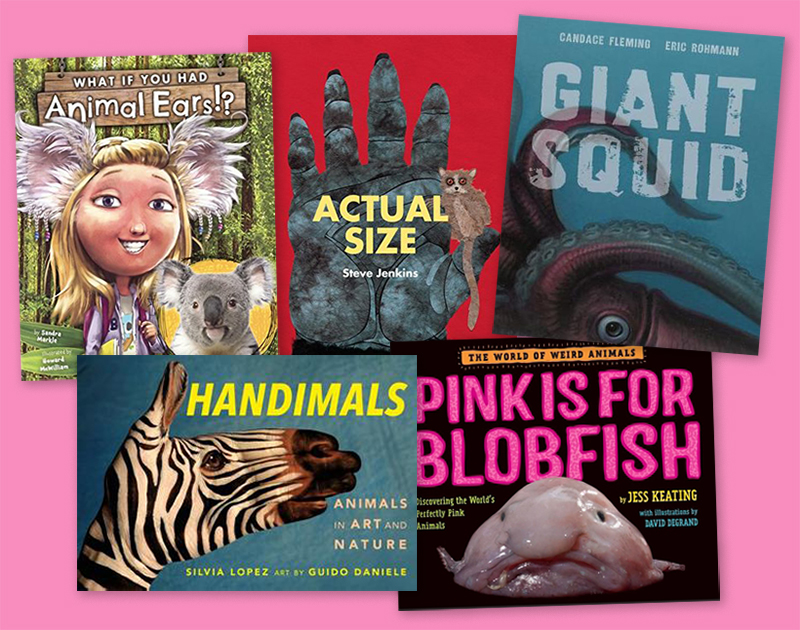5 Tips for Starting a Nonfiction Book Club for Kids
Many schools and libraries host fiction-focused book clubs, but it’s important to keep young info-lovers in mind, too. If a nonfiction book club seems like a good fit for the children at your school, why not give it a try. Here are some tips for getting started.

Many schools and libraries host fiction-focused book clubs, but it’s important to keep young info-lovers in mind, too. After all, studies show that 40 percent of elementary-aged children prefer expository nonfiction and another 30 percent enjoy expository and narrative texts equally.
While you can certainly run a student book club that features a healthy mix of fiction and nonfiction titles, some children may be particularly interested in joining a group that reads all fact-based books. And the benefits are undeniable.
Besides encouraging students to talk about reading, which enhances their comprehension and ability to navigate texts, book clubs give children an opportunity to practice life skills like taking turns, expressing opinions, listening to others, and working collaboratively.
When students read and discuss nonfiction with their peers, they learn to recognize when they don’t understand the text and develop a range of strategies that can aid their comprehension, such as re-reading, asking questions, using a dictionary, and reading passages aloud.
If a nonfiction book club seems like a good fit for the children at your school, why not give it a try. Here are some tips for getting started.
- When it comes to engaging info-kids, topic is king. As students sign up for the nonfiction book club, ask them to fill out a brief survey to help you identify some of the topics that interest them most.
If you have trouble pinpointing common interests among club members, animal books are a good place to start. Be sure to include titles that represent all 5 Kinds of Nonfiction. Possibilities include Actual Size by Steve Jenkins, Pink Is for Blobfish by Jess Keating and David DeGrand, and Handimals: Animals and Art in Nature by Silvia Lopez and Guideo Daniele.
- At the first meeting, briefly book talk the titles you’ve selected. A nonfiction book talk should consist of the title and the name of the author (and illustrator, if there is one); key text characteristics (text structure, expository or narrative writing style, voice, etc.), and a bit of information about the content and art.
Here’s a sample book talk:
Imagine you woke up one morning and had jackrabbit ears! What would you look like? Would the world sound different?
In the expository nonfiction list book What If You Had Animal Ears?, author Sandra Markle uses clear, straightforward text to introduce us to eleven animals with amazing ears.
Did you know a jackrabbit’s ears give off body heat to help it stay cool? And a Tasmanian devil’s ears blush red when its excited or upset? There’s so much interesting information in this book, and it’s chock full of captivating photos and fun illustrations. Howard McWilliam’s art will make you want laugh out loud!
At the end of the book, you’ll find out what makes your ears so special. Trust me. This is a book you won’t want to miss.
After the children have had some time to explore the books on their own, invite them to select their first and second choices. Use that information to determine which books they will discuss during the next few meetings.
- Encourage the children to make logistical decisions about how the club will operate, such as how often the group should meet and how many pages members will read between each meeting. Letting the children know that they can re-think these decisions at any time will help to keep them invested.
- During the first few meetings, as the students get to know one another, it may be helpful for you to facilitate their conversations and model how to discuss a book’s craftmanship—not just it’s content.
For example, if the group is reading Giant Squid by Candace Fleming and Eric Rohmann, encourage them to notice how the author has inserted line breaks to establish both the rhythm and pacing. Show them how language devices like alliteration, sensory details, and repetition create a sense of wonder that hooks readers. Ask club members to consider how the artwork contributes to the book’s mysterious mood. You may wish to share video interviews in which authors and/or illustrators discuss their creative process.
When students begin to notice the craft elements of nonfiction books without your guidance, encourage them to take ownership of the club and lead their own meaty conversations about the books.
- As the students become more confident readers and begin to develop their own opinions about nonfiction books, encourage them to select their own titles, just as adult book club members would. You can introduce them to a range of popular book review sources and invite them to help you make decisions about which nonfiction books you purchase. And when the new titles arrive, offer book-club members the opportunity to develop book talks to share books they’re excited about with their classmates.
Melissa Stewart has written more than 180 science books for children. She co-wrote 5 Kinds of Nonfiction: Enriching Reading and Writing Instruction with Children’s Books (Stenhouse, July 2021) and edited the anthology Nonfiction Writers Dig Deep: 50 Award-winning Authors Share the Secret of Engaging Writing (NCTE)
RELATED
The job outlook in 2030: Librarians will be in demand
The job outlook in 2030: Librarians will be in demand
ALREADY A SUBSCRIBER? LOG IN
We are currently offering this content for free. Sign up now to activate your personal profile, where you can save articles for future viewing






Add Comment :-
Be the first reader to comment.
Comment Policy:
Comment should not be empty !!!